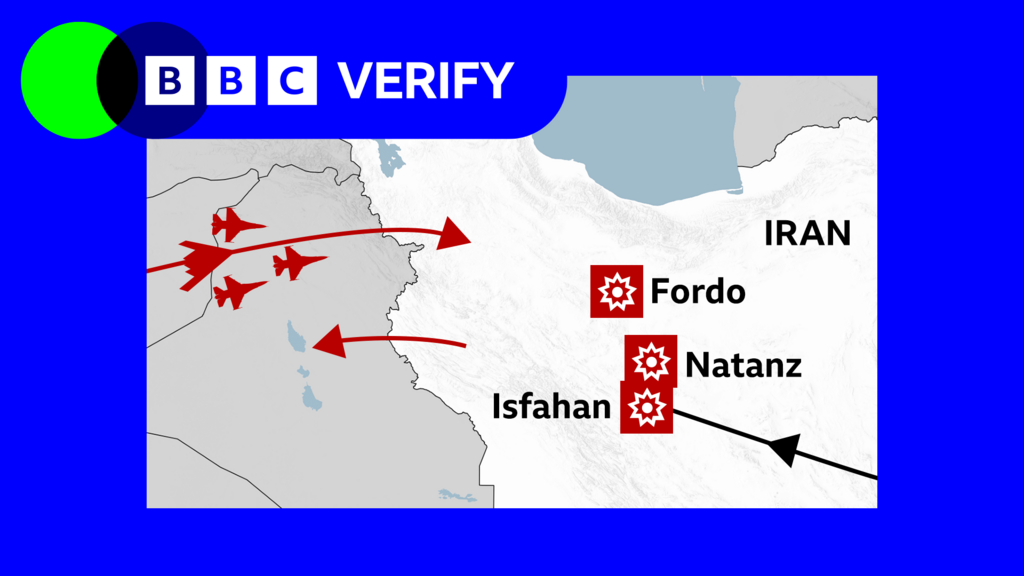An 18-hour, multi-refueling flight employing a sophisticated decoy strategy characterized the US mission to strike Iranian nuclear facilities, according to General Dan Caine, Chairman of the Joint Chiefs of Staff. Details of “Operation Midnight Hammer” emerged from a Pentagon briefing Sunday, hours after the attacks.
Defense Secretary Pete Hegseth described the operation as a swift, undetected in-and-out strike. The mission commenced at midnight EDT when President Trump, Vice President Vance, Secretary of State Rubio, and senior Pentagon officials monitored the launch from Whiteman Air Force Base, Missouri.
B-2 stealth bombers departed at 00:01 EDT, targeting Iran’s most secure nuclear sites. These subsonic jets, carrying bunker-buster bombs capable of penetrating over 18 meters of concrete, were intended to neutralize the deeply buried Fordo enrichment facility, considered the heart of Iran’s nuclear program.
To mask the operation, a simultaneous deployment of bombers to Guam created a diversion, drawing global attention westward. This deception, known only to a select few, allowed the main strike force—seven B-2 bombers—to proceed undetected across the Atlantic.
The Pentagon’s account cannot be independently verified via publicly available flight tracking data. While satellite imagery may indicate damage, precise strike timings remain unconfirmed. Reaching the Middle East around 17:00 EDT, the bombers were supported by aircraft screening for enemy fighters and surface-to-air missiles.
No Iranian air defenses engaged, a factor attributed by missile defense expert Patrycja Bazylczyk (Center for Strategic and International Studies) to Israeli air superiority over Iran. Gen. Caine detailed the subsequent events, though the provided map of the bombers’ trajectory varied slightly across different briefing versions.
The Trump administration declared the operation a complete victory, asserting the obliteration of Iran’s nuclear program. However, the extent of the damage remains to be fully assessed, with Iran acknowledging the attacks but downplaying their impact. Simultaneously, Tomahawk cruise missiles were launched from a US submarine in the Arabian Sea towards a nuclear site near Isfahan.
Defense expert Dr. Stacie Pettyjohn (Center for a New American Security) highlighted the coordinated nature of the attack, enabling simultaneous strikes on multiple sites. Further deception tactics were reportedly employed during the bombers’ entry into Iranian airspace.
The initial strike occurred at approximately 18:40 EDT, with the lead bomber deploying two GBU-57 Massive Ordnance Penetrators (MOPs) at Fordo. The MOP, capable of penetrating significant depths of concrete or earth, represents the only weapon with a potential to reach the deep tunnels at Fordo. This marked the first combat use of the MOP.
Fourteen MOPs were reportedly deployed across Fordo and Natanz, supplemented by Tomahawk strikes on Isfahan. The bombers, after an 18-hour flight, exited Iranian airspace at 19:30 EDT. The operation involved approximately 75 precision-guided weapons and over 125 aircraft, according to Secretary Hegseth. The long-term effects on Iran’s nuclear capabilities require further analysis.
Dr. Pettyjohn described the operation as incredibly complex and sophisticated, highlighting its uniqueness. However, the ultimate success in permanently hindering Iran’s nuclear program remains uncertain.
What do you want BBC Verify to investigate?
BBC security analyst Gordon Corera examines the likely damage to Iran’s nuclear sites.
The sites targeted include a uranium enrichment facility at Fordo.
Two survivors were also pulled from the rough waters and are being treated in hospital for hypothermia and other injuries.
The US strikes on Saturday night mean challenges posed by Iran for the prime minister could last months.
People inside Iran tell BBC Persian about their fear and anger after the US bombed key nuclear sites overnight.

